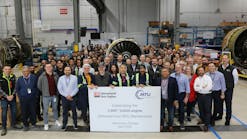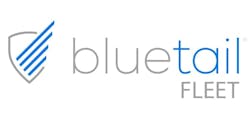Business Editors/Transportation Writers
SEATTLE--(BUSINESS WIRE)--November 13, 2008--Airlines that take full advantage of Performance Based Navigation (PBN) routinely accrue benefits of reduced fuel burn and greenhouse gas emissions, improved schedule reliability and increased safety. That was the message from pioneering airline users of PBN to more than 150 aviation experts who gathered at the Naverus Performance Based Navigation Summit that concluded Tuesday.
On the second day of the conference, speakers from Qantas, WestJet, Air New Zealand and Air China described the results their organizations are achieving today from PBN and encouraged aviation organizations worldwide to accelerate deployment.
“If you are not involved in PBN in the next five years, you are going to be left behind,” said Ian Brinkworth, of Qantas, which began flying PBN procedures in 2006.
Today, Qantas is saving fuel and enhancing safety at 15 Australian airports. By the end of 2010, Airservices Australia, the country’s air navigation service provider, plans to complete a national PBN network, said Peter Curran, the agency’s manager of National ATC Service Capability. In the Brisbane Green Project trial that began in 2007, Airservices Australia, in partnership with Qantas and Naverus, validated that air traffic management can successfully accommodate mixed PBN and non-PBN traffic.
The United States will soon have an even larger PBN project as Southwest Airlines rolls out PBN routes at every airport it serves. Jeff Martin, Senior Director of Flight Operations at Southwest, said the airline is currently training pilots and upgrading aircraft. He predicted Southwest would fly its first PBN flight between Dallas and Houston early next year. Southwest’s PBN initiative is a direct fit with the FAA’s NextGen airspace modernization program, he said.
Conference participants heard plenty of other examples of airlines deriving benefits from PBN.
WestJet, which operates a PBN network to 21 Canadian airports, is seeing environmental and reliability benefits. WestJet Technical Pilot David Deere said the airline receives a substantial environmental tax credit from the Canadian government each year as a result of the reductions in greenhouse gas emissions enabled by PBN.
WestJet’s PBN capabilities allowed the airline to operate a normal schedule at the resort destination of Kelowna during a busy holiday season when other airlines had to divert aircraft for two days due to poor visibility. “That one instance helped pay for our PBN implementation,” Deere said.
Air China enhances safety and access at high-altitude airports using tailored PBN procedures that Naverus designed. Without PBN, access to these airports would be severely limited by weather, terrain and limitations of ground-based navigation facilities, said Capt. Chen Dongcheng, deputy director of the Air China Southwest Flight Training Center. In fact, the airport at Linzhi is an RNP-only airport, he said.
And at Air New Zealand, on-time reliability at Queenstown vastly improved when the airline implemented Naverus-designed Performance Based Navigation procedures last year, said Capt. Philip Kirk of Air New Zealand. The Queenstown airport is situated in mountainous terrain where radar services are limited. Without PBN, aircraft operations at Queenstown are limited to good weather. By using the tailored PBN procedures, Air New Zealand maintains on-time arrivals and departures even in poor-weather, low-visibility, conditions.
Based on the success in Queenstown, Kirk said Air New Zealand wants to develop a national PBN network similar to the one being deployed in Australia.
When the Summit opened Monday morning, Naverus CEO Steve Forte told participants that public concerns over global warming and the environment are forcing airlines to look for new ways to reduce their carbon footprint. “It’s clear from what we’ve seen at this conference over the last two days that we can use PBN to stop wasting fuel right now,” he said.
More details about the 2008 PBN Summit are available at the conference website: www.pbnsummit.org.
About Naverus
Naverus is the worldwide leader in Performance Based Navigation, with hundreds of PBN procedures in active use worldwide. Airlines, air navigation service providers and national regulators look to Naverus to design PBN flight paths that save fuel, reduce carbon emissions, reduce miles flown, reduce block times and optimize airspace. The company’s customers include Airbus, Air China, Air New Zealand, Boeing, CAAC, COPA, IATA, jetBlue, Jetstar, SkyEurope, Southwest Airlines, Qantas, Virgin Blue, WestJet and others. Naverus Inc. is a privately held Seattle company founded in 2003. http://www.naverus.com
Naverus, Inc.Ken Shapero, 253-867-3955502-314-3079 [email protected]
State Keywords: WashingtonIndustry Keywords: Technology; Data Management; Hardware; Networks; Software; Transport; Air; Travel; TransportationSource: Naverus Inc.




